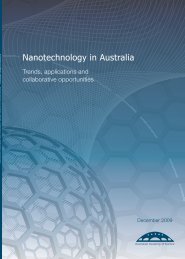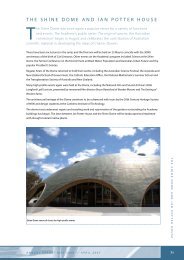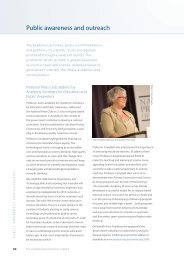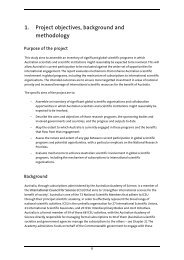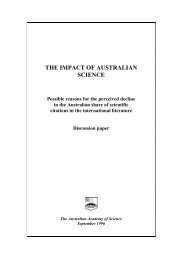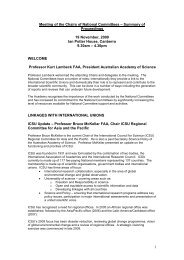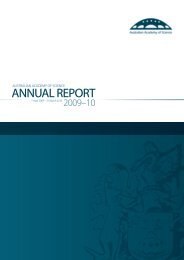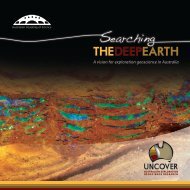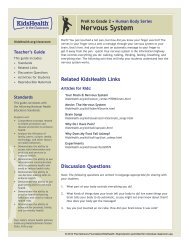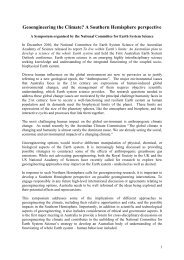Australia's Major National Research Facilities - Australian Academy ...
Australia's Major National Research Facilities - Australian Academy ...
Australia's Major National Research Facilities - Australian Academy ...
You also want an ePaper? Increase the reach of your titles
YUMPU automatically turns print PDFs into web optimized ePapers that Google loves.
Government Agency <strong>Facilities</strong><br />
In addition to a plethora of local and state government agencies, and education and vocational training institutions, with facilities of<br />
relevance to the geosciences, the following <strong>Australian</strong> Government agencies also have facilities of relevance to the geosciences.<br />
• Agriculture, Fisheries and Forestry Australia (AFFA)<br />
• <strong>Australian</strong> Antarctic Division (AAD)<br />
• <strong>Australian</strong> Nuclear Science and Technology Agency (ANSTO)<br />
• Chief Scientist Commonwealth Scientific and Industrial <strong>Research</strong> Organisation (CSIRO)<br />
• Defence Science and Technology Organisation (DSTO)<br />
• Environment Australia (EA)<br />
• Geoscience Australia<br />
• <strong>National</strong> Oceans Office (NOO)<br />
• Native Title Tribunal (NTT)<br />
• Office of Spatial Data Management (OSDM)<br />
Personnel and Other Information<br />
Contacts for the facilities listed above are available via the relevant website.<br />
In the 2001 census, 5067 individuals declared themselves to be geoscientists. While the numbers of people involved in<br />
geoscience research and tertiary education were not identified in the census, Department of Education, Science and Training<br />
(DEST) figures indicate that 1288 equivalent full time students (EFTSU) commenced higher education geoscience education<br />
in 2002. Fewer than 200 are expected to graduate with an honours degree, widely regarded as the basic professional<br />
qualification. Over the past 12 years, approximately 20 000 <strong>Australian</strong>s have been educated at first year university level in<br />
geoscience, with the total number since 1960 estimated to be approximately 40 000. This equates to about 1 in 500<br />
<strong>Australian</strong>s (or 0.2%) having some tertiary education in geoscience. The supply of high-quality graduates with an appropriate<br />
mix of skills (e.g. maths, physics, chemistry, biology) is becoming a major long-term issue for science, engineering and<br />
technology disciplines in general and for the geosciences in particular.<br />
Within the geoscience discipline, weaknesses include geophysics, hydrogeology, and palaeontology. Fundamental datasets<br />
are also of particular concern.<br />
Geography<br />
Geography is a field-based discipline that spans both the natural and social sciences. The discipline is characterised by a breadth of<br />
subject matter in which the traditional division has been between human and physical Geography. In recent years a third category of<br />
'environmental Geography' has sometimes been recognised, encompassing many courses that deal explicitly with human-environment<br />
relations and sustainable development. Geographic Information Science (GIS) and remote sensing is another distinct teaching area,<br />
occurring almost wholly within higher education but increasingly important in secondary schools. There is an emerging global interest<br />
in Geography which other disciplines such as geology, biology, physics and computer science are now starting to exploit through<br />
subjects such as environmental earth science, landscape ecology, climatology and meteorology and GIS.<br />
6



